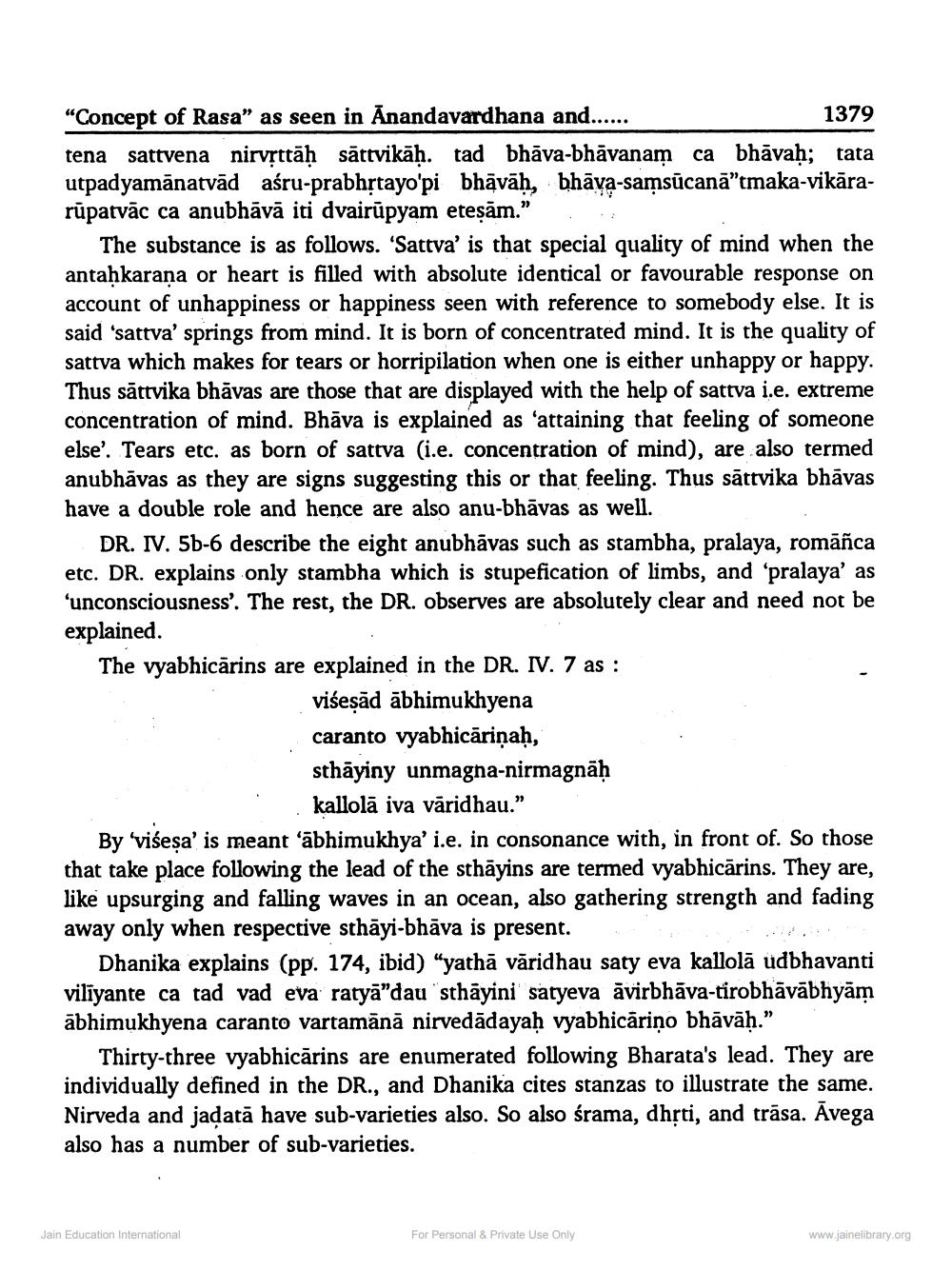________________
"Concept of Rasa" as seen in Anandavardhana and......
1379
tena sattvena nirvṛttāḥ sättvikāḥ. tad bhāva-bhavanam ca bhāvaḥ; tata utpadyamānatvād aśru-prabhṛtayo'pi bhāvāḥ, bhāva-samsūcanā”tmaka-vikārarūpatvāc ca anubhāvā iti dvairūpyam eteṣām."
The substance is as follows. 'Sattva' is that special quality of mind when the antaḥkarana or heart is filled with absolute identical or favourable response on account of unhappiness or happiness seen with reference to somebody else. It is said 'sattva' springs from mind. It is born of concentrated mind. It is the quality of sattva which makes for tears or horripilation when one is either unhappy or happy. Thus sättvika bhāvas are those that are displayed with the help of sattva i.e. extreme concentration of mind. Bhāva is explained as 'attaining that feeling of someone else'. Tears etc. as born of sattva (i.e. concentration of mind), are also termed anubhavas as they are signs suggesting this or that feeling. Thus sättvika bhāvas have a double role and hence are also anu-bhāvas as well.
DR. IV. 5b-6 describe the eight anubhavas such as stambha, pralaya, romāñca etc. DR. explains only stambha which is stupefication of limbs, and 'pralaya' as 'unconsciousness'. The rest, the DR. observes are absolutely clear and need not be explained.
The vyabhicārins are explained in the DR. IV. 7 as:
viseṣād ābhimukhyena
caranto vyabhicāriṇaḥ,
sthāyiny unmagna-nirmagnäḥ kallolā iva väridhau."
By 'visesa' is meant 'abhimukhya' i.e. in consonance with, in front of. So those that take place following the lead of the sthāyins are termed vyabhicārins. They are, like upsurging and falling waves in an ocean, also gathering strength and fading away only when respective sthāyi-bhāva is present.
Dhanika explains (pp. 174, ibid) "yathā vāridhau saty eva kallolā udbhavanti viliyante ca tad vad eva ratyā"dau sthāyini satyeva avirbhāva-tirobhāvābhyām abhimukhyena caranto vartamānā nirvedadayaḥ vyabhicāriņo bhāvāḥ."
Thirty-three vyabhicārins are enumerated following Bharata's lead. They are individually defined in the DR., and Dhanika cites stanzas to illustrate the same. Nirveda and jaḍatā have sub-varieties also. So also śrama, dhṛti, and trāsa. Āvega
also has a number of sub-varieties.
Jain Education International
For Personal & Private Use Only
www.jainelibrary.org




